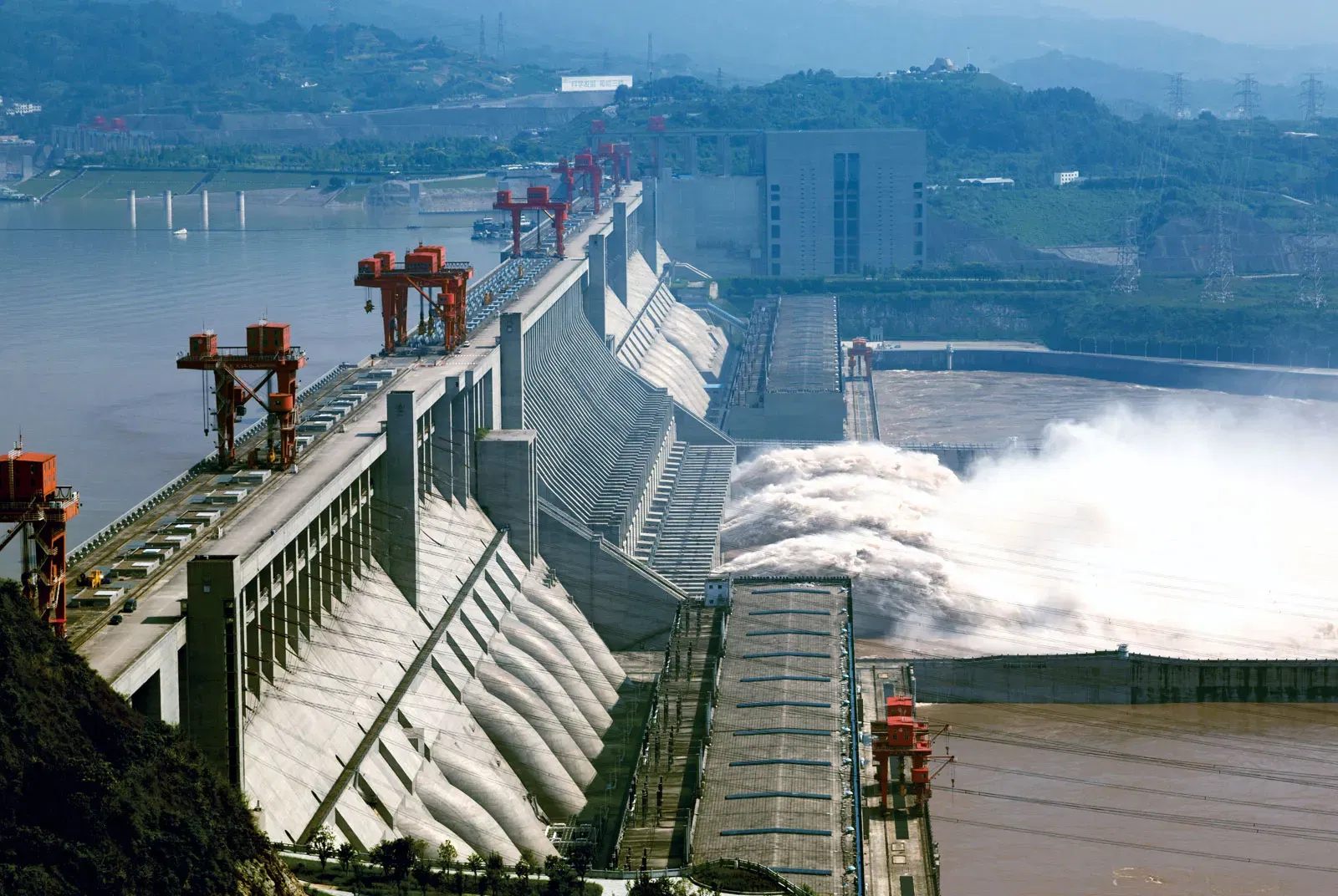
चीन ने हाल ही में ब्रह्मपुत्र नदी पर दुनिया के सबसे बड़े बांध के निर्माण को मंजूरी दी है। यह बांध तिब्बत में भारतीय सीमा के पास बनाया जाएगा। लगभग $137 बिलियन की अनुमानित लागत वाला यह परियोजना भारत और बांग्लादेश सहित पड़ोसी देशों में जल प्रवाह और क्षेत्रीय स्थिरता पर संभावित प्रभावों को लेकर चिंताएं बढ़ा रही है।
परियोजना के विवरण
बांध यारलुंग ज़ांगबो नदी (ब्रह्मपुत्र का तिब्बती नाम) के निचले हिस्से पर बनाया जाएगा। इस परियोजना की कुल निवेश लागत एक ट्रिलियन युआन से अधिक होने की उम्मीद है, जिससे यह थ्री गॉर्जेस डैम को पीछे छोड़ते हुए दुनिया की सबसे बड़ी आधारभूत संरचना परियोजना बन जाएगी।
स्थान और इंजीनियरिंग चुनौतियां
यह बांध हिमालय के गहरे घाटी में स्थित होगा, जो एक भूकंपीय क्षेत्र में स्थित है। यह इलाका भूकंप के प्रति संवेदनशील है। ब्रह्मपुत्र नदी दुनिया की सबसे गहरी घाटी से गुजरती है, जिसमें 25,000 फीट से अधिक की ऊर्ध्वाधर गिरावट है। भारी बारिश के कारण नदी में प्रचुर जल प्रवाह होता है।
इन जोखिमों के बावजूद, चीनी अधिकारियों ने सुरक्षा और पर्यावरण संरक्षण के लिए प्रतिबद्धता व्यक्त की है। परियोजना के विकास को सुरक्षित बनाने और पर्यावरणीय प्रभाव को कम करने के लिए उन्नत तकनीकों और व्यापक भूवैज्ञानिक अध्ययनों का उपयोग किया जा रहा है।
जलविद्युत क्षमता
इस सुविधा से प्रति वर्ष 300 बिलियन किलोवाट-घंटा से अधिक बिजली उत्पादन की उम्मीद है, जो लगभग 300 मिलियन लोगों को एक साल के लिए ऊर्जा प्रदान करने के लिए पर्याप्त है। नदी के निचले हिस्से में लगभग 70 मिलियन किलोवाट की जलविद्युत क्षमता है, जो थ्री गॉर्जेस डैम से अधिक है।
परियोजना के तहत नामचा बारवा पर्वत से नदी के प्रवाह का हिस्सा मोड़ने के लिए सुरंगें बनाने की योजना है। इसे चीन की ऊर्जा सुरक्षा और पर्यावरणीय लक्ष्यों के लिए एक रणनीतिक पहल माना जा रहा है। यह तिब्बत स्वायत्त क्षेत्र में आर्थिक विकास को भी प्रोत्साहित करेगा।
परीक्षाओं के लिए महत्वपूर्ण तथ्य
- ब्रह्मपुत्र नदी: यह एशिया की एक प्रमुख नदी है, जो तिब्बत, भारत और बांग्लादेश से होकर बहती है और लाखों जीवन व पारिस्थितिकी तंत्र का समर्थन करती है।
- यारलुंग ज़ांगबो नदी: ब्रह्मपुत्र का तिब्बती नाम, जो अपनी जलविद्युत क्षमता और अद्वितीय भूवैज्ञानिक विशेषताओं के लिए जानी जाती है।
- नामचा बारवा: तिब्बत में स्थित एक प्रमुख पर्वत, जो ब्रह्मपुत्र नदी के पास है और अपनी कठिन भौगोलिक स्थितियों और जैव विविधता के लिए प्रसिद्ध है।
- थ्री गॉर्जेस डैम: चीन के यांग्त्ज़ी नदी पर स्थित दुनिया का सबसे बड़ा जलविद्युत बांध, जो अपने विशाल ऊर्जा उत्पादन के लिए जाना जाता है।
यह महत्वाकांक्षी परियोजना, जो चीन की ऊर्जा आवश्यकताओं को पूरा करने में बड़ी भूमिका निभाएगी, क्षेत्रीय जल साझाकरण, पारिस्थितिकी प्रभाव और अंतरराष्ट्रीय सहयोग से जुड़े महत्वपूर्ण सवाल भी खड़े करती है।
Current Affairs in English -
China has recently given the green light for the construction of the world’s largest dam on the Brahmaputra River in Tibet, near the Indian border. Estimated to cost around $137 billion, this massive project has raised concerns in neighboring countries, including India and Bangladesh, about its potential effects on water flow and regional stability.
Project Details
The dam is planned for the lower stretch of the Yarlung Zangbo River, the Tibetan name for the Brahmaputra. With an estimated investment exceeding one trillion yuan, it will surpass the Three Gorges Dam in scale, making it the largest infrastructure project globally.
Location and Engineering Challenges
Located in a deep Himalayan gorge, the dam faces significant engineering difficulties due to its position near a tectonic plate boundary. The region is seismically active and prone to earthquakes. The Brahmaputra River flows through the world’s deepest canyon, with a vertical drop exceeding 25,000 feet, and receives heavy rainfall, contributing to its strong water flow.
Despite these challenges, Chinese officials have emphasized safety and environmental protection. Advanced technologies and comprehensive geological studies are being utilized to reduce ecological impacts and ensure the project’s safety.
Hydropower Potential
The facility is expected to generate over 300 billion kWh of electricity annually, enough to power approximately 300 million people for a year. The lower section of the river has a hydropower capacity of nearly 70 million kilowatts, surpassing the Three Gorges Dam.
The project includes plans to redirect part of the river’s flow by drilling tunnels through the Namcha Barwa mountain. It is considered a strategic initiative for China’s energy security and environmental goals and is expected to boost economic development in the Tibet Autonomous Region.
Key Points for GK and Exams
- Brahmaputra River: A vital river in Asia flowing through Tibet, India, and Bangladesh, supporting millions of lives and ecosystems.
- Yarlung Zangbo River: The Tibetan name for the Brahmaputra, known for its hydropower potential and unique geological features.
- Namcha Barwa: A notable mountain in Tibet near the Brahmaputra, recognized for its challenging terrain and biodiversity.
- Three Gorges Dam: Previously the world’s largest hydroelectric dam, located on the Yangtze River in China, known for its massive energy production.
This ambitious project, while presenting significant benefits for China’s energy needs, raises important questions about regional water-sharing, ecological impact, and international cooperation.

